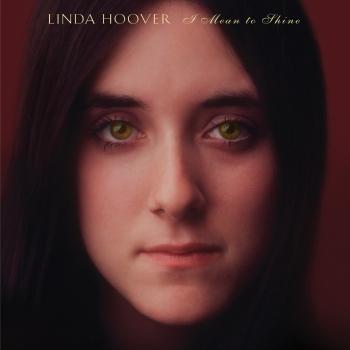Linda Hoover
Biographie Linda Hoover
Linda Hoover
In 1966, soon-to-be legendary producer Gary Katz was an A&R rep for Bobby Darin’s company TM Music, located in the Brill Building in Manhattan. Katz was introduced to a 14-year old singer-songwriter who had recently placed first in a regional talent contest in Ramsey, NJ. She was an eager little brown haired beauty with a booming voice. Her name was Linda Hoover. Major labels courted Linda but her father insisted she go to college before signing a deal. He moved the family to Florida and enrolled Linda in Jacksonville University. She was miserable and barely attended class, only wanting to sing. When she turned 18, she called Gary Katz who invited her to New York with the promise of a record deal. He kept his word.
Katz combined Linda’s folk-pop style with that of now fusion-jazz icons Walter Becker and Donald Fagen. She was signed to major label Roulette Records and began production on her debut album, I Mean to Shine. The album was one of Katz’ first major label productions and contained original songs by Becker and Fagen and Hoover. Hotshot studio musicians like Jeff “Skunk” Baxter, future lead guitarist for both Steely Dan and The Doobie Brothers, played on the record. The Dick Cavett Orchestra, Jerome Richardson and Eric Weisberg brought Becker and Fagen’s arrangements to life. Joel Brodsky, one of the most prominent band photographers of the day, shot the album cover. Hoover was on the cusp of realizing her dream of becoming a pop star, using her golden voice to make her living. “Donald’s command of the piano and Jeff’s creativity on guitar blew me away,“ Linda recalls, "I was impressed with Gary’s skill in the studio. He knew when to step back and let the musicians create but he also knew when to take charge. It was one of the most exciting times of my life.”
Roulette Records owner, music industry mogul Morris Levy, loved Linda and her record. But I Mean to Shine would never see the light of day. Unbeknownst to Hoover, Levy shelved the album after a dispute over publishing and Katz, Becker and Fagen sold the title track to Barbra Streisand. Stung to the core, the heartbroken Linda Hoover declined the invitation to accompany the team to Los Angeles. One year later, they had a hit record as now Rock and Roll Hall of Fame inductees, Steely Dan. Linda returned to her family in Florida with only a quarter inch tape to show for the year she had dedicated to the project with Becker and Fagen. She continued to write and perform regionally while Steely Dan rose to super-stardom. As the years went by, her quarter inch tape sat in a closet, until she realized what she had: one of the first examples of Steely Dan’s iconic sound. By blending Linda’s simple pop aesthetic with Becker and Fagen’s jazz intellect, they had created one of the first examples of Jazz-Pop-Fusion and an invaluable piece of rock and roll history.
Linda dug up her tape and prayed that it was still intact enough to convert to a digital medium. There was no guarantee the tape had survived the years but Linda had to try. After baking the tape in an oven for 12 hours and patching in the digital recorder, the engineers in charge of the conversion played the tape. When it was finished, they became the first people other than Linda and a handful of family and friends to hear I Mean to Shine in 35 years and…..…. it was flawless. This was one of Becker and Fagen's first major label recordings and It had survived the years and contained some of their earliest works; some of which were never recorded again. Their brilliant string and horn arrangements were impeccably preserved.
In Steely Dan – Reelin’ in the Years, biographer Brian Sweet dedicates 7 pages to Linda’s story. "I Mean to Shine is a fine album and it was a tragedy for Linda that it didn't come out at the time," Sweet writes after hearing Linda’s never released album. In the book he compares Linda’s version of, I Mean to Shine, with Streisand’s, "Linda Hoover's version…… was certainly better than Perry managed to achieve with Barbara Streisand's effort and, according to Becker and Fagen, truer to the original song." In the 2017 book, Steely Dan FAQ, Anthony Robustelli writes, “The song has a middle section and outro that were dropped from Streisand’s version, and some of the lyrics were changed as well, making her version a bit more generic than Hoover’s, which is superior.”
After 5 decades, Linda Hoover’s never-released album is being made available along with her original album, Another World, produced by her son Toft Willingham. Keep an ear open as Linda plans to release not only I Mean to Shine and Another World, but other live and studio recordings made along her journey. Linda and Toft also plan to record her entire original catalog. “I have always loved my mother’s voice but until I studied music at Berklee, I didn’t understand the scope of her writing. She uses odd time signatures and complicated Jazz changes without realizing it,” Linda’s son and producer explains. “Her voice has aged like a fine wine. It has matured but maintains a youthful quality and her delivery only gets better.” At 66, Linda is ready to release her music, “I’m excited to share this music with the world,” says Hoover, “it’s been a long time coming and I’m thankful for every note. I’m especially excited about my new record, Another World. My son Toft produced it and my husband, sons, daughter-in-law and nieces sang harmonies. It was as if God smiled on the project from the beginning. I am truly blessed.”








